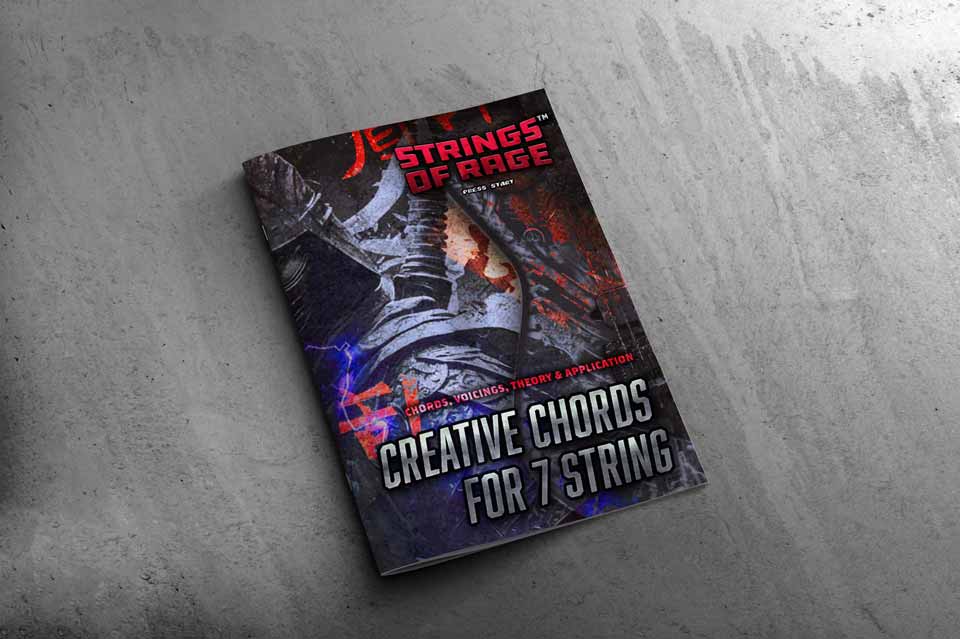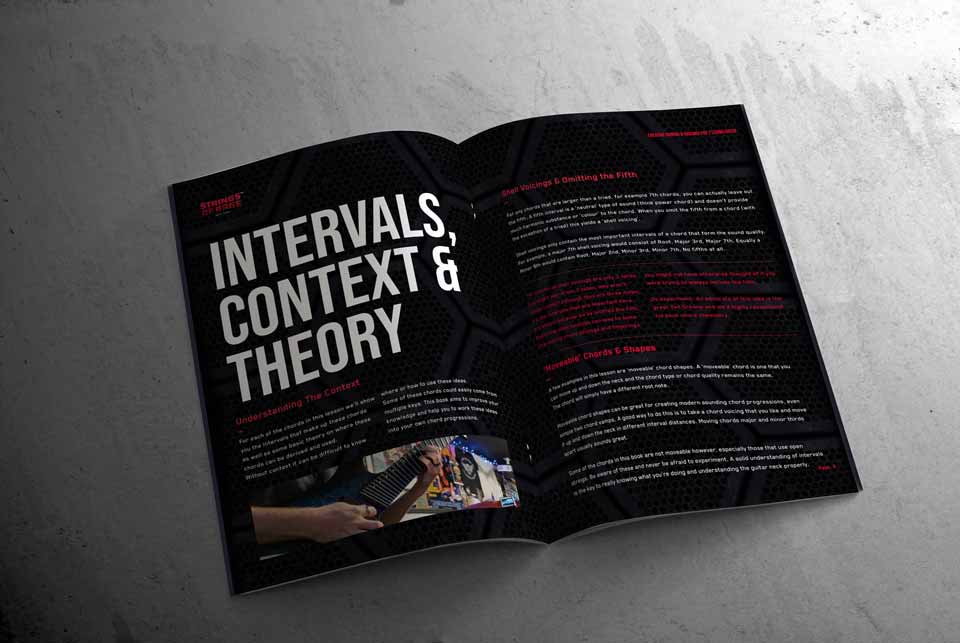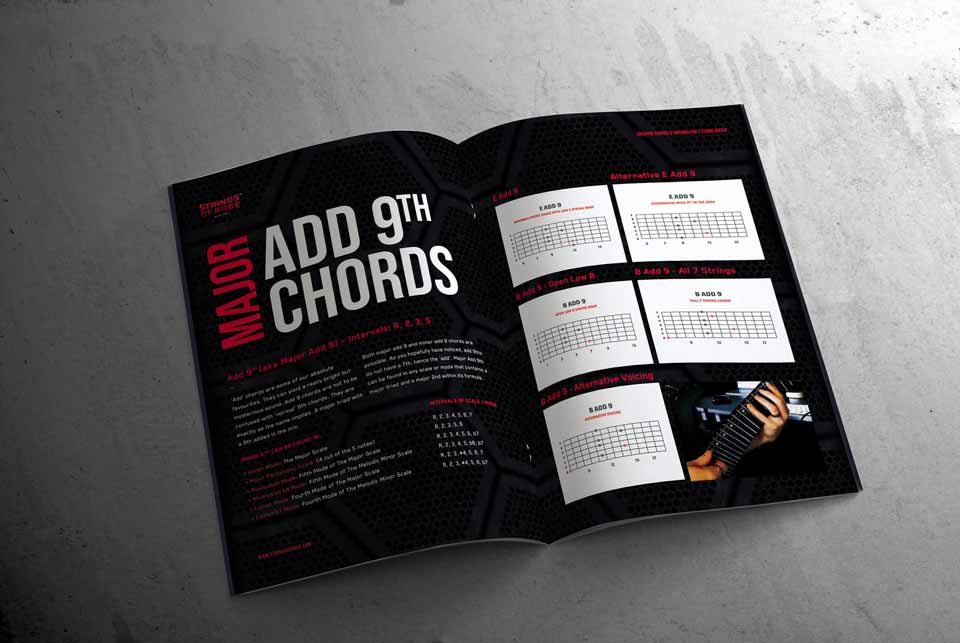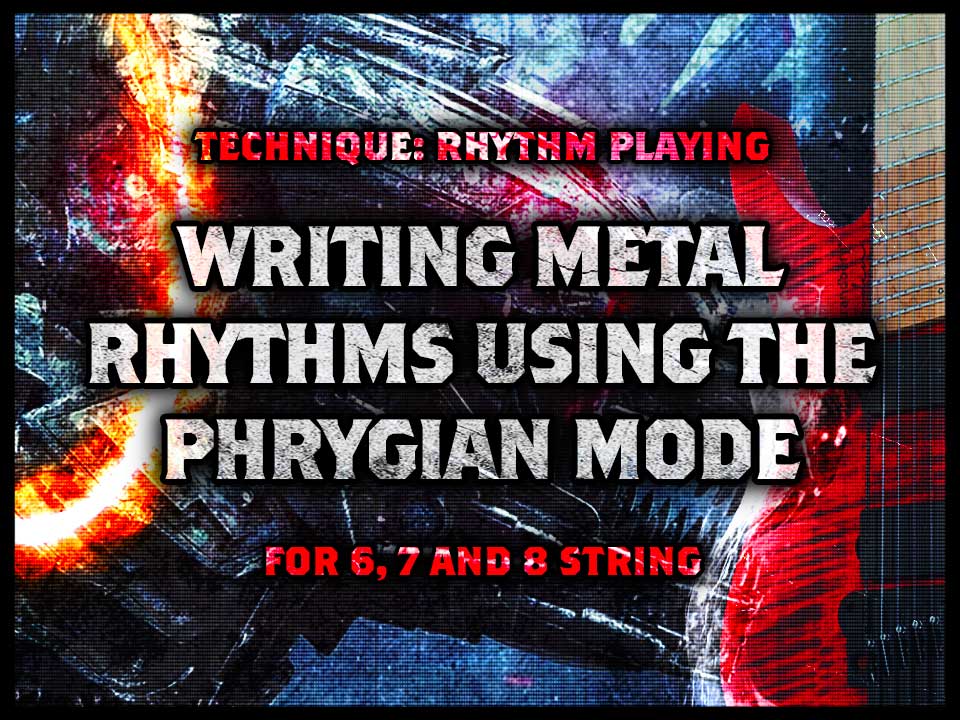Welcome to the second instalment of 7 String Guitar Chords! Hopefully you’ve already seen part one by Joe. His 7 string chord lesson used ‘Drop A’ tuning. However in this 7 string chord lesson we’re just going to be using standard 7 string tuning which is B E A D G B E.
If you don’t have a 7 string guitar, don’t worry. All of these chords sound great on 6 string too. You can just leave out the low B string if you don’t have one. We’ll clearly show you the interval construction of each chord so that if you really know your intervals you’ll be able to re-voice the chord for 6 string.
A lot of these 7 string guitar chords will use open strings. Open strings facilitate a big sound and in some cases let you use all 7 strings. The low B string definitely gives a chord more balls and helps to chunk it up for a fatter sound. Let’s get into it!
eBook for This Lesson: Patron Exclusive
Strings of Rage™ syndicate member patrons get exclusive axe-cess to the ebook for this lesson. Print copies can also be requested.




Continue Reading
























